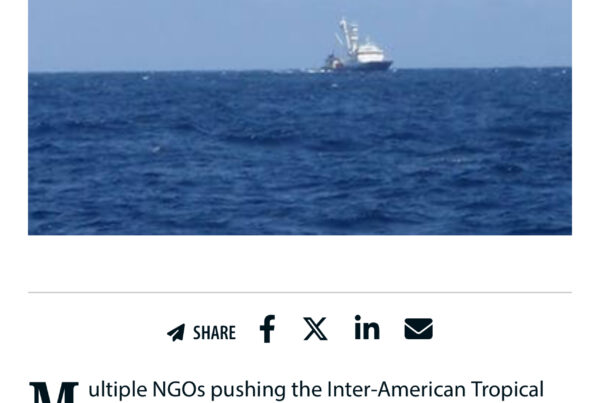The Western and Central Pacific Ocean’s bigeye, yellowfin, albacore, and skipjack tuna are all in healthy condition and the stocks are not overfished, according to a report issued recently by the Pacific Community.
According to the report, “The western and central Pacific tuna fishery: 2020 overview and status of stocks,” the tuna catch for 2020 was estimated at 2,743,310 metric tons (MT) a decrease from the record high of 2,987,934 MT caught in 2019.
The purse-seine fishery accounted for an estimated 1,881,706 MT, or 69 percent, of the total catch in 2020 – a drop from the record high of 2,101,408 MT caught in 2019.
The pole-and-line fishery landed an estimated 235,000 MT, or 9 percent of the catch. The report also added that a South Pacific-wide albacore stock assessment was conducted jointly by the Pacific Community and Inter-American Tropical Tuna Commission (IATTC) for the first time in 2021.
The South Pacific albacore catch was 64,862 MT in 2020, 6 percent lower than the five-year average, and 20 percent lower than the all-time high of 80,986 MT caught in 2010.
SPC Senior Fisheries Scientist Steven Hare said the signs indicate the four tropical tuna stocks in the Western and Central Pacific Ocean “are considered to be very healthy.”
“The biomass is in a good state – it’s above this overfished level, as we call it,” he said. Stocks are also above the overfishing level, he said.
While the four targeted tuna species are in a healthy state, the fisheries all have issues with bycatch, such as sharks and billfish. The report said that status of silky and oceanic whitetip sharks “is of concern, as assessments have shown that these stocks are subject to overfishing and, in the case of oceanic whitetip, severely overfished.”
A Western and Central Pacific Fisheries Commission (WCPFC) ban on the use of either shark lines or wire traces in longline sets is in place, which has been shown to help reduce the catch of silky and oceanic whitetip sharks.
The WCPFC also recommended reducing catch, rebuilding the stock, or enhancing data collection efforts for Pacific bluefin tuna, Southwest Pacific striped marlin, Western and Central North Pacific striped marlin, blue shark, silky shark, and oceanic whitetip shark.
Paul Hamer, the study’s principal fisheries scientist for stock assessment and modeling, said handling practices for sharks must be improved so the species have a better chance of survival.
“Targeting sharks is really not that common these days. The only shark that potentially gets a bit of targeting is the South Pacific blue shark, which is quite high catches in some of the fleets for that species, which suggests that there may be targeting going on,” Hamer said. But all the other species are not targeted, and then considered as bycatch. And mostly, that’d be released, if they can be.”



